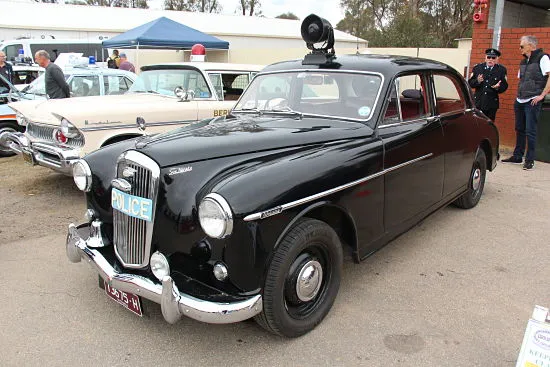Wolseley Tyres
Classic Wolseley Tyres
On the following pages, Longstone Classic Tyres give classic tyre fitment recommendations for Wolseley cars.
If your Wolseley is not listed, don't panic! Please give us a call on:
01302 711 123
or
Email: sales@longstonetyres.co.uk
Wolseley History

The firm began as an automotive brand in around 1895-96, when Herbert Austin, a 30-year-old manager at the Wolseley Sheep Shearing Company, became interested in engines and autos. During the winter of 1895-96, he created his own version of a Léon Bollée design he saw in Paris. Later, he discovered that another British firm had purchased the rights, forcing Austin to create his own design. The Wolseley Autocar No. 1 was unveiled in 1897, as the second Wolseley car. It had three wheels (one in front, two in back), independent rear suspension, a mid-engine, and back-to-back seating for two persons.
It was a failure, and although being promoted for trade, none were sold. In 1899, the fourth Wolseley automobile, the four-wheeled Wolseley "Voiturette" was introduced. In 1900, another four-wheeled automobile was produced, this time featuring a steering wheel. The "Voiturette" was the basis for the first Wolseley vehicles offered to the public, although manufacture did not begin until 1901, by which time the firm had changed owners. The automotive division was set out (with funding from Vickers) as a separate firm in Adderley Park, Birmingham, that year. Austin supervised the new Wolseley company for a brief period before leaving to establish his own firm, the Austin Motor Company, in 1905.

Wolseley bought the Siddeley Autocar Company from its creator, John Davenport Siddeley. Siddeley (after Baron Kenilworth) took over the united company and renamed it Wolseley-Siddeley until his retirement in 1910. He then became the manager of the Deasy Motor Company, which later became Siddeley-Deasy. Armstrong-Whitworth eventually combined the two to form Armstrong Siddeley. In 1914, the firm was renamed the Wolseley Motor Company. Wolseley Motors Limited also commenced operations in Montreal and Toronto, Canada. Following World War I, this was renamed British and American Motors.
In 1918, Wolseley formed a partnership with Ishikawajiama Ship Building and Engineering in Tokyo, Japan. In 1922, the first Japanese-built Wolseley automobile went off the assembly line. Following WWII, the Japan enterprise reformed and renamed itself Isuzu Motors in 1949. Isuzu is now a subsidiary of General Motors. Wolseley prospered swiftly by selling high-end automobiles and even erected an opulent showroom, Wolseley House, in Piccadilly. However, finances were stretched, and the firm was placed in receivership in October 1926.

In 1926, William Morris, 1st Viscount Nuffield paid £730,000 for Wolseley. General Motors and the Austin Motor Company were among the other contenders. Morris renamed the firm Wolseley Motors (1927) Ltd and centralised manufacturing at Birmingham's huge Ward End Works. Wolseley had become a subsidiary of Morris' Motor Company in 1935, and Wolseley vehicles were soon modelled on Morris designs. In 1938, it joined the Nuffield Organisation, together with Morris and Riley/Autovia.
Morris and Wolseley manufacturing was centralised at Cowley after the war, and badge engineering kicked in. The Morris Oxford MO served as the basis for the first post-war Wolseleys, the 4/50 and 6/80 models. Later, Wolseleys shared similar bodywork and chassis with MG and Riley, particularly the 4/44 and 6/90, which were intimately linked to the MG Magnette ZA/ZB and the Riley Pathfinder, respectively. At BMC, further badge engineering escapades followed. In 1957, the Wolseley 1500 was built on the Morris Minor's anticipated replacement. The following year, the Wolseley 15/60 launched Pinin Farina's new medium-sized BMC saloon design. Within a year, it was followed by identical vehicles from five different manufacturers.
The little Wolseley Hornet was modelled on the Mini, but Riley shared the booted body design as the Elf. Finally, in 1967, the Wolseley 18/85 was introduced as a variant of the Austin 1800. Riley, which had long competed with Wolseley, was phased out in 1969. Wolseley remained in a reduced form in 1972 with the Wolseley Six, a six-cylinder Austin 1800 variation known as the Austin 2200. The Wolseley brand is now held by Nanjing Automobile Group, which acquired it as part of the MG Rover Group's assets. It should be noted that the Wolseley Sheep Shearing Company continued to exist and is now known as Wolseley plc.



